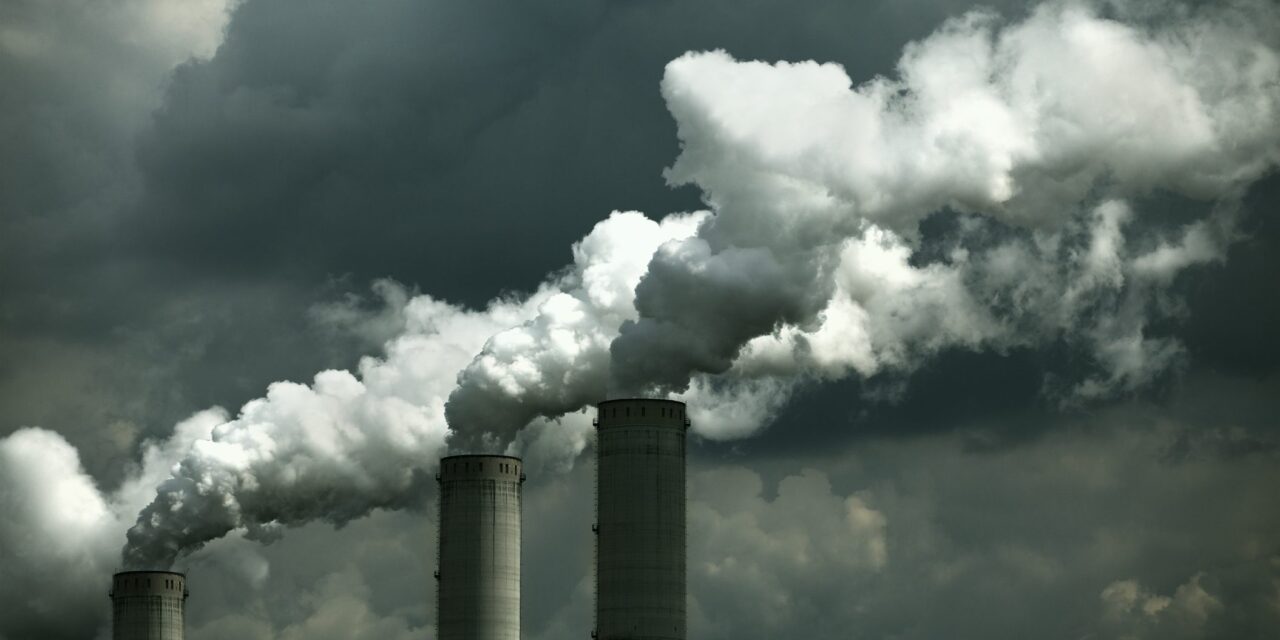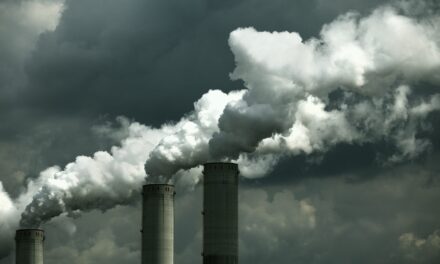The recent hacking of an e-mail server at the Climate Research Unit at the University of East Anglia resulted in much glee from a variety of climate skeptics. They saw in the released e-mails purported evidence that the climate change debate is a vast conspiracy by scientists to maintain or obtain funding for their pet projects.
Hacked E-Mails Fuel Global Warming Debate
The e-mails, which cover a decade of correspondence, are getting a lot of attention among bloggers who point to statements in them that they say suggest the scientists colluded and manipulated data to support their global warming viewpoints.
But facts don’t lie and the evidence keeps coming in.
Follow below::
In preparation for the Copenhagen Climate Change Conference (COP15), the IPCC has prepared an interim paper – since a new full report is not due until 2013.
The Copenhagen Diagnosis: Climate Science Report
It is more than three years since the drafting of text was completed for the Intergovernmental Panel on Climate Change (IPCC) Fourth Assessment Report (AR4). In the meantime, many hundreds of papers have been published on a suite of topics related to human-induced climate change.
The purpose of this report is to synthesize the most policy-relevant climate science published since the close-off of material for the last IPCC report. The rationale is two-fold.
First, this report serves as an interim evaluation of the evolving science midway through an IPCC cycle – IPCC AR5 is not due for completion until 2013.
Second, and most important, the report serves as a handbook of science updates that supplements the IPCC AR4 in time for Copenhagen in December 2009, and any national or international climate change policy negotiations that follow.
A low resolution pdf copy of the report can be found here
I don’t think I am breaking any copyright issues by extracting extensively from it. In fact, the preface says:
“This report is freely available on the web at:
www.copenhagendiagnosis.com”.
The report has been purposefully written with a target readership of policy-makers, stakeholders, the media and the broader
public. Each section begins with a set of key points that summarises the main findings. The science contained in the report is
based on the most credible and significant peer-reviewed literature available at the time of publication. The authors primarily
comprise previous IPCC lead authors familiar with the rigor and completeness required for a scientific assessment of this nature.
What I would like to highlight are the numerous misconceptions that prevail in the wider public with regards to climate change issues. The report has addressed these very specifically:
1. Is the greenhouse effect already saturated, so that adding more CO2 makes no difference?
No, not even remotely. It isn’t even saturated on the runaway greenhouse planet Venus, with its atmosphere made up of 96% CO2 and a surface temperature of 467 °C, hotter even than Mercury (Weart and Pierrehumbert 2007).
[…] (page 12)2. Has global warming recently slowed down or paused?
No. There is no indication in the data of a slowdown or pause in the human-caused climatic warming trend. The observed global temperature changes are entirely consistent with the climatic warming trend of ~0.2 °C per decade predicted by IPCC, plus superimposed short-term variability (see Figure 4). The latter has always been – and will always be – present in the climate system. Most of these short-term variations are due to internal oscillations like El Niño – Southern Oscillation, solar variability (predominantly the 11-year Schwabe cycle) and volcanic eruptions (which, like Pinatubo in 1991, can cause a cooling lasting a few years).
If one looks at periods of ten years or shorter, such short-term variations can more than outweigh the anthropogenic global warming trend. For example, El Niño events typically come with global-mean temperature changes of up to 0.2 °C over a few years, and the solar cycle with warming or cooling of 0.1 °C over five years (Lean and Rind 2008). However, neither El Niño, nor solar activity or volcanic eruptions make a significant contribution to longer-term climate trends. For good reason the IPCC has chosen 25 years as the shortest trend line they show in the global temperature records, and over this time period the observed trend agrees very well with the expected anthropogenic warming.
Nevertheless global cooling has not occurred even over the past ten years, contrary to claims promoted by lobby groups and picked up in some media.
[…] (page 15)3. Can solar activity or other natural processes explain global warming?
No. The incoming solar radiation has been almost constant over the past 50 years, apart from the well-known 11-year solar cycle (Figure 5). In fact it has slightly decreased over this period. In addition, over the past three years the brightness of the sun has reached an all-time low since the beginning of satellite measurements in the 1970s (Lockwood and Fröhlich 2007, 2008). But this natural cooling effect was more than a factor of ten smaller than the effect of increasing greenhouse gases, so it has not noticeably slowed down global warming. Also, winters are warming more rapidly than summers, and overnight
minimum temperatures have warmed more rapidly than the daytime maxima – exactly the opposite of what would be the case if the sun were causing the warming.
Other natural factors, like volcanic eruptions or El Niño events, have only caused short-term temperature variations over time spans of a few years, but cannot explain any longer-term climatic trends (e.g., Lean and Rind 2008).
[…] (page 16)4. Isn’t Antarctica cooling and Antarctic sea ice increasing?
Antarctica is not cooling: it has warmed overall over at least the past 50 years. Although the weather station at the South Pole shows cooling over this period, this single weather station is not representative. For example, there is a warming trend at Vostok, the only other long-term monitoring station in the interior of the continent. Several independent analyses (Chapman and Walsh 2008; Monaghan et al. 2008; Goosse et al. 2009; Steig et al. 2009) show that on average, Antarctica has warmed by about 0.5°C since wide-scale measurements began in the 1957 International Geophysical Year, with particularly rapid warming around the Antarctic Peninsula region and over the West Antarctic Ice Sheet (Figure 14 shows the mean trend from 1957-2006). Furthermore, there is direct evidence from borehole measurements that warming in West Antarctica began no later than the 1930s (Barrett et al. 2009).
[…]
The factors that determine sea ice extent around Antarctica are very different from those in the Arctic, because Antarctica is a continent sited around the pole and surrounded by water, just the opposite of the Arctic geography.
[…] page 35)5. Isn’t climate always changing, even without human interference?
Of course. But past climate changes are no cause for complacency; indeed, they tell us that the Earth’s climate is very sensitive to changes in forcing. Two main conclusions can be drawn from climate history:
Climate has always responded strongly if the radiation balance of the Earth was disturbed. That suggests the same will happen again, now that humans are altering the radiation balance by increasing greenhouse gas concentrations. In fact, data from climate changes in the Earth’s history have been used to quantify how strongly a given change in the radiation balance alters the global temperature (i.e., to determine the climate sensitivity). The data confirm that our climate system is as sensitive as our climate models suggest, perhaps even more so.
Impacts of past climate changes have been severe. The last great Ice Age, when it was globally 4-7 °C colder than now, completely transformed the Earth’s surface and its ecosystems, and sea level was 120 meters lower. When the Earth last was 2-3 °C warmer than now, during the Pliocene 3 million years ago, sea level was 25-35 meters higher due to the smaller ice sheets present in the warmer climate.
[…] (page 47)6. Are we just in a natural warming phase, recovering from the “little ice age”?
No. A “recovery” of climate is not a scientific concept, since the climate does not respond like a pendulum that swings back after it was pushed in one direction. Rather, the climate responds like a pot of water on the stove: it can only get warmer if you add heat, according to the most fundamental law of physics, conservation of energy. The Earth’s heat budget (its radiation balance) is well understood. By far the biggest change in the radiation balance over
the past 50 years, during which three quarters of global warming has occurred, is due to the human-caused increase in greenhouse gas concentrations (see above). Natural factors have had a slightly cooling effect during this period.
Global temperatures are now not only warmer than in the 16th-19th centuries, sometimes dubbed the “the little ice age” (although this term is somewhat misleading in that this largely regional phenomenon has little in common with real ice ages). Temperatures are in fact now globally warmer than any time in the past 2000 years – even warmer than in the “medieval optimum” a thousand years ago (see Figure 19). This is a point that all global climate reconstructions by different groups of researchers, based on different data and methods, agree upon. (page 48)7. In climate history, didn’t CO2 change in response to temperature, rather than the other
way round?
It works both ways: CO2 changes affect temperature due to the greenhouse effect, while temperature changes affect CO2 concentrations due to the carbon cycle response. This is what scientists call a feedback loop.
If global temperatures are changed, the carbon cycle will respond (typically with a delay of centuries). This can be seen during the ice age cycles of the past 3 million years, which were caused by variations in the Earth’s orbit (the so-called Milankovich cycles). The CO2 feedback amplified and globalized these orbital climate changes: without the lowered CO2 concentrations and reduced greenhouse effect, the full extent of ice ages cannot be explained, nor can the fact that the ice ages occurred simultaneously in both hemispheres. The details of the lag-relationship of
temperature and CO2 in Antarctic records have recently been reproduced in climate model experiments (Ganopolski and Roche 2009) and they are entirely consistent with the major role of CO2 in climate change. During the warming at the end of ice ages, CO2 was released from the oceans – just the opposite of what we observe today, where CO2 is increasing in both the ocean and the atmosphere.
[…] (page 49)
The skeptics and the industry special interests and lobbyists are relentless in their quest at disinformation. Hopefully, the points made in the report and extracted above will help you to debunk their efforts.





